WPT Workshops
WPT Workshops will be held on May 8, 2024.
Workshop 1: World Prospects of Dynamic Wireless Power Transfer
Organizers: Prof. Osamu Shimizu and Prof. Seho Kim
May 8, 09:20 – 10:05 [Room B]
Powering Tomorrow: DWPT Activity in USA
Presenter: Abhilash Kamineni (Utah State University (ASPIRE), USA)
Abstract:
Explore the latest Dynamic Wireless Power Transfer (DWPT) activity in USA that will redefine the landscape for future commercial systems. DWPT is continuously driven to facilitate electric vehicle adoption, particularly due to the lagging advancements in battery technology. These advancements are crucial for enhancing key parameters of interest in electric vehicles, such as range and performance, while simultaneously reducing vehicle costs. We delve into the latest activities at The NSF Engineering Research Center for Advancing Sustainability through Powered Infrastructure for Roadway Electrification (ASPIRE) surrounding pilot deployments, opportunities, and the intersection of innovation and practicality.
Biography:
 Abhilash Kamineni received the B.E. (Hons.) degree in electrical engineering and the Ph.D. degree in power electronics from The University of Auckland, Auckland, New Zealand, in 2012 and 2017, respectively. He joined the Power Electronics Laboratory, Utah State University, Logan, UT, USA, as a Postdoctoral Fellow and an Assistant Professor, in 2017 and 2019, respectively. His main research interests include wireless power transfer and resonant converters. Reebal Nimri received the B.S. and M.S. degree in electrical engineering from Utah State University, Logan, Utah, USA. He is currently a Magnetics Research Engineer at the ASPIRE NSF Engineering Research Center. His main research interests include inductive power transfer and high-frequency magnetics.
Abhilash Kamineni received the B.E. (Hons.) degree in electrical engineering and the Ph.D. degree in power electronics from The University of Auckland, Auckland, New Zealand, in 2012 and 2017, respectively. He joined the Power Electronics Laboratory, Utah State University, Logan, UT, USA, as a Postdoctoral Fellow and an Assistant Professor, in 2017 and 2019, respectively. His main research interests include wireless power transfer and resonant converters. Reebal Nimri received the B.S. and M.S. degree in electrical engineering from Utah State University, Logan, Utah, USA. He is currently a Magnetics Research Engineer at the ASPIRE NSF Engineering Research Center. His main research interests include inductive power transfer and high-frequency magnetics.
May 8, 10:05 – 10:50 [Room B]
High power wireless power transfer (HP-WPT) as enabler for electric road systems
Presenter: Christian Köbel (ENRX, Switzerland)
Abstract:
For the electrification of heavy-duty vehicles, especially the long-haul trucks, the electrified road system is an essential technology. The average power levels needed for this application are in the range of 200-300 kW. How can a system look like offering such a power level whilst keeping the environmental impact low and respect the EMC requirements?
Biography:
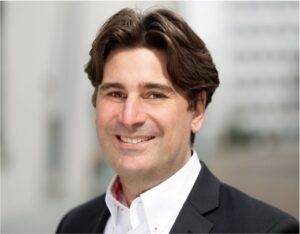 Mr. Köbel started his work experience at Bombardier Switzerland AG in May 2000. In 2001, he took on the role of the Manager Marketing & Product Planning for traction converters and control. In January 2004, he was appointed as Manager Engineering Product Management responsible for planning and execution of all research & development activities within the division “Propulsion & Controls”. Between 2008 and 2009 he took the role as Director R&D Programme Management within the BT Group Engineering function in Berlin where he did coordinate all cross divisional projects and the advanced engineering projects resulting in the ECO4 portfolio. Since 2010 he was involved in the Primove Technology, first as Director Technology followed by Director Product Management. With the foundation of the new company Bombardier Primove GmbH, he took over the position as Head of Strategy and Business Development and finally as Managing Director. In 2019, he started his own consultancy company Köbel Consulting GmbH. In May 2020, he started at IPT Technology GmbH in the role as Chief Technology Officer. With the takeover of IPT Technology and the newly formed company ENRX, the role changed first to R&D Director and later to Director Technology, being responsible for all Charge products. Mr. Köbel holds a degree in electrical engineering / international project engineering from University of applied science Konstanz and a Bachelor of Business Administration from GSBA Zürich.
Mr. Köbel started his work experience at Bombardier Switzerland AG in May 2000. In 2001, he took on the role of the Manager Marketing & Product Planning for traction converters and control. In January 2004, he was appointed as Manager Engineering Product Management responsible for planning and execution of all research & development activities within the division “Propulsion & Controls”. Between 2008 and 2009 he took the role as Director R&D Programme Management within the BT Group Engineering function in Berlin where he did coordinate all cross divisional projects and the advanced engineering projects resulting in the ECO4 portfolio. Since 2010 he was involved in the Primove Technology, first as Director Technology followed by Director Product Management. With the foundation of the new company Bombardier Primove GmbH, he took over the position as Head of Strategy and Business Development and finally as Managing Director. In 2019, he started his own consultancy company Köbel Consulting GmbH. In May 2020, he started at IPT Technology GmbH in the role as Chief Technology Officer. With the takeover of IPT Technology and the newly formed company ENRX, the role changed first to R&D Director and later to Director Technology, being responsible for all Charge products. Mr. Köbel holds a degree in electrical engineering / international project engineering from University of applied science Konstanz and a Bachelor of Business Administration from GSBA Zürich.
10:50 – 11:15
Coffee Break
May 8, 11:15 – 12:00 [Room B]
The Global Need for Wireless ERS
Presenter: Andreas Wendt (ElectReon Germany GmbH, Germany)
Abstract:
The transportation sector is responsible for more than 20% of worldwide green-house gas emissions, roughly three quarters of which are caused by road vehicles. The transition to electric vehicles (EVs) is key to reducing these emission, produced by internal combustion engines. Current EV charging systems consist mostly of plug-in charging stations, which inhibit a global uptake of EVs due to the limitations of range caused by insuficcient battery technology as well as the significant amounts of real estate required to install charging infrastructure at a large scale. Furtheremore, batteries cause massive emissions in production; and can be expensive, heavy, and finite to supply a world of EVs. One alternative solution that has been proposed for charging EVs is the use of an Electric Road System (ERS), infrastructure which allows EVs to charge while they drive along the road. Here, wireless ERS has massive advatanges over competing solutions. Experiences from field trials as well as recent progress in standardization and future development are presented in this workshop.
Biography:
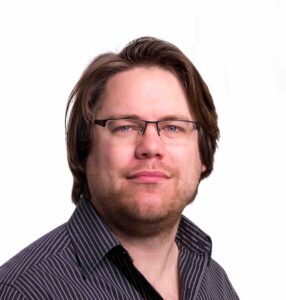 Andreas Wendt is the Managing Director of ElectReon Germany GmbH, subsidiary of Electreon Wireless LTD, the industry pioneer of dynamic wireless charging and electric road systems. Before his engagement with ElectReon, Andreas led several wireless charging projects at Toyota Motorsports GmbH and Toyota Gazoo Racing. Prior to Toyota, he worked for Ford Motor Company in the field of software quality. His experience spans magnetic and system simulations, prototyping, data analysis and WPT system architecture. Wendt holds a Ph.D in Nuclear Structure Physics and a M.Sc in Experimental Physics from the University of Cologne.
Andreas Wendt is the Managing Director of ElectReon Germany GmbH, subsidiary of Electreon Wireless LTD, the industry pioneer of dynamic wireless charging and electric road systems. Before his engagement with ElectReon, Andreas led several wireless charging projects at Toyota Motorsports GmbH and Toyota Gazoo Racing. Prior to Toyota, he worked for Ford Motor Company in the field of software quality. His experience spans magnetic and system simulations, prototyping, data analysis and WPT system architecture. Wendt holds a Ph.D in Nuclear Structure Physics and a M.Sc in Experimental Physics from the University of Cologne.
May 8, 12:00 – 12:45 [Room B]
Japan’s First DWPT Demonstration Test on Public Road
Presenter: Hiroshi Fujimoto (The University of Tokyo, Japan)
Abstract:
The research group of the university of Tokyo which is organized by Prof. Fujimoto based on a national project has started Japan’s first Dynanmic Wireless Power Transfer(DWPT) demonstration test on public roads in 2023. This test is held at Kashiwanoha area which Ministry of Land, Infrastructure, Transport and Tourism recognized officially. DWPT system needs more durability of coil structure and short time power transmission than SWPT system. The solutions of DWPT system that are burying coils, coil detection system, and etc for these differences is presented in this workshop.
Biography:
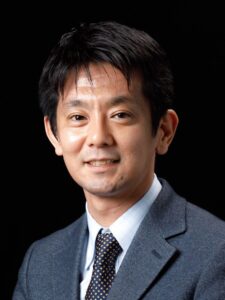 Hiroshi Fujimoto received the Ph.D. degree in electrical engineering from the Department of Electrical Engineering, The University of Tokyo, Kashiwa, Japan, in 2001. In 2001, he joined the Department of Electrical Engineering, Nagaoka University of Technology, Niigata, Japan, as a Research Associate. From 2002 to 2003, he was a Visiting Scholar with the School of Mechanical Engineering, Purdue University, West Lafayette, IN, USA. In 2004, he joined the Department of Electrical and Computer Engineering, Yokohama National University, Yokohama, Japan, as a Lecturer, and became an Associate Professor in 2005. He was an Associate Professor with The University of Tokyo from 2010 to 2020 and has been a Professor since 2021. His interests include control engineering, motion control, nanoscale servo systems, electric vehicle control, motor drive, visual servoing, and wireless power transfer.
Hiroshi Fujimoto received the Ph.D. degree in electrical engineering from the Department of Electrical Engineering, The University of Tokyo, Kashiwa, Japan, in 2001. In 2001, he joined the Department of Electrical Engineering, Nagaoka University of Technology, Niigata, Japan, as a Research Associate. From 2002 to 2003, he was a Visiting Scholar with the School of Mechanical Engineering, Purdue University, West Lafayette, IN, USA. In 2004, he joined the Department of Electrical and Computer Engineering, Yokohama National University, Yokohama, Japan, as a Lecturer, and became an Associate Professor in 2005. He was an Associate Professor with The University of Tokyo from 2010 to 2020 and has been a Professor since 2021. His interests include control engineering, motion control, nanoscale servo systems, electric vehicle control, motor drive, visual servoing, and wireless power transfer.
12:45 – 14:00
Lunch
Workshop 2: Semiconductor devices and circuit design technologies for future wireless power transfer systems
Organizers:Prof. Kenjiro Nishikawa and Prof. Naoki Shinohara
May 8, 14:00 – 14:45 [Room B]
AlGaN/GaN HEMT based Gated Anode Diode for High Power Microwave Power Trasfer
Presenter: Akio Wakejima (Kumamoto University, Japan)
Abstract:
We have proposed a gated-anode diode (GAD) using a normally-off AlGaN/GaN HEMT. A gate recessed structure was introduced for low turn-on voltage. The developed GAD demonstrated more than 90% efficiency with hundreds mW power conversion from 2.4 GHz to DC. Also, for higher power we fabricated an on-chip double voltage rectifier with 2 x 2 series diodes. It successfully demonstrated 80% efficiency under over-W 2.4 GHz power input.
Biography:
 Akio Wakejima received the B.S., M.S.,and Ph.D. degrees from Osaka University, Osaka, Japan, in 1992, 1994, and 2007, respectively. In 1994, he joined NEC Corporation, Japan, where he had been engaged in research and development of III-V compound semiconductor devices for microwave and millimeter-wave applications. From 2002 to 2003, he spent an academic year at the Georgia Institute of Technology, Atlanta. In 2010, he joined Nagoya Institute of Technology, and then in 2024 he joined Kumamoto university where he has been engaged in the research of GaN HEMTs for a power amplifier and a rectifier.
Akio Wakejima received the B.S., M.S.,and Ph.D. degrees from Osaka University, Osaka, Japan, in 1992, 1994, and 2007, respectively. In 1994, he joined NEC Corporation, Japan, where he had been engaged in research and development of III-V compound semiconductor devices for microwave and millimeter-wave applications. From 2002 to 2003, he spent an academic year at the Georgia Institute of Technology, Atlanta. In 2010, he joined Nagoya Institute of Technology, and then in 2024 he joined Kumamoto university where he has been engaged in the research of GaN HEMTs for a power amplifier and a rectifier.
May 8, 14:45 – 15:30 [Room B]
Wafer bonding of nitrides to diamond for fabricating low-thermal-resistance GaN HEMTs
Presenter: Naoteru Shigekawa (Osaka Metropolitan University, Japan)
Abstract:
Performances as well as reliability of GaN HEMTs are ultimately limited by their temperature rise due to self-heating effects. Because of their high thermal conductivity than that of conventionally used Si or 4H-SiC, diamond substrates are assumed to be promising for realizing GaN HEMTs with the lowest thermal resistance hence the highest performances. In this workshop, we explore the possibility of wafer bonding of nitrides to diamond substrates for fabricating GaN-on-diamond HEMTs [1]. We discuss (i) fabrication of nitride/diamond junctions using wafer bonding technologies, (ii) characteristics of the nitride/diamond junctions such as nano structural properties of bonding interfaces and their thermal stability, as well as (iii) the thermal dissipation of GaN HEMTs that we made on such junctions. Their temperature rise during operation is found to be smaller than the temperature rise in HEMTs on Si and 4H-SiC substrates with the same layer structures and geometries. We also observe better electrical characteristics, suppressed negative differential conductance and larger maximum transconductance, in the fabricated GaN-on-diamond HEMTs in comparison with HEMTs on the other substrates.
Biography:
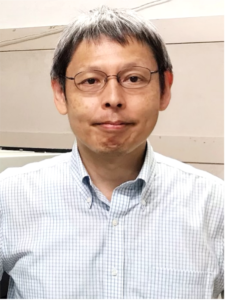 Naoteru Shigekawa (SM) received the B.S., M.S., and Ph.D. degrees in physics from the University of Tokyo, Tokyo, Japan, in 1984, 1986, and 1993, respectively. He was with the Nippon Telegraph and Telephone (NTT) Laboratories, NTT Corporation, Atsugi, Japan, between 1986 and 2011. He was engaged in research on hot-carrier transport in III-V compound-semiconductor heterostructures and electron devices at NTT Laboratories. From 1993 to 1994, he was a Visiting Scientist with the Department of Physics, University of Nottingham, Nottingham, U.K. Since 2011, he has been with the Graduate School of Engineering, Osaka City University (currently Osaka Metropolitan University), Osaka, Japan, as professor. His current research interest includes fabrication of heterointerfaces and advanced hybrid semiconductor devices such as GaN-on-diamond HEMTs, multijunction solar cells, and heterojunction bipolar transistors using surface activated bonding and their characterization. Prof. Shigekawa is a member of the Physical Society of Japan, the Japan Society of Applied Physics, the Electrochemical Society, and the Institute of Physics.
Naoteru Shigekawa (SM) received the B.S., M.S., and Ph.D. degrees in physics from the University of Tokyo, Tokyo, Japan, in 1984, 1986, and 1993, respectively. He was with the Nippon Telegraph and Telephone (NTT) Laboratories, NTT Corporation, Atsugi, Japan, between 1986 and 2011. He was engaged in research on hot-carrier transport in III-V compound-semiconductor heterostructures and electron devices at NTT Laboratories. From 1993 to 1994, he was a Visiting Scientist with the Department of Physics, University of Nottingham, Nottingham, U.K. Since 2011, he has been with the Graduate School of Engineering, Osaka City University (currently Osaka Metropolitan University), Osaka, Japan, as professor. His current research interest includes fabrication of heterointerfaces and advanced hybrid semiconductor devices such as GaN-on-diamond HEMTs, multijunction solar cells, and heterojunction bipolar transistors using surface activated bonding and their characterization. Prof. Shigekawa is a member of the Physical Society of Japan, the Japan Society of Applied Physics, the Electrochemical Society, and the Institute of Physics.
15:30 – 15:55
Coffee Break
May 8, 15:55 – 16:40 [Room B]
Development of α-Ga2O3 Power Devices
Presenter: Takashi Shinohe (CSO, FLOSFIA, Japan)
Abstract:
Corundum-structured Ga2O3 (α-Ga2O3) is expected to be a promising UWBG (Ultra-Wide Band Gap) material (bandgap: 5.3eV) for power devices that can achieve lower loss than SiC at a lower cost. We were able to overcome two challenges of oxide semiconductors: high thermal resistance and lack of p-type. We have successfully demonstrated high breakdown voltage (600 – 1700 V) thin-film SBDs attached on metal substrate with good heat dissipation. Currently, we are developing JBS (Junction Barrier Schottky) structures and normally-off MOSFETs using α-(Ir,Ga)2O3, which is confirmed to be p-type. In this talk, the latest results of α-Ga2O3 epitaxial growth and device development will be presented.
Biography:
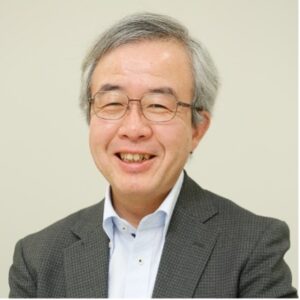 He has been engaged in research and development of silicon (Si) and silicon carbide (SiC) power devices (SBD, PiN, JFET, MOSFET, IGBT) and their application products at Toshiba Corporation for over 35 years. He joined FLOSFIA Inc. in 2017 and currently serves as Director and CSO, responsible for research and development of α-Ga2O3 power devices.
He has been engaged in research and development of silicon (Si) and silicon carbide (SiC) power devices (SBD, PiN, JFET, MOSFET, IGBT) and their application products at Toshiba Corporation for over 35 years. He joined FLOSFIA Inc. in 2017 and currently serves as Director and CSO, responsible for research and development of α-Ga2O3 power devices.
May 8, 16:40 – 17:25 [Room B]
Highly efficient rectification with GaAs E-pHEMT gated anode diodes
Presenter: Kenji Itoh (Kanazawa Isntitute of Technology, Japan)
Abstract:
In this presentation, GaAs rectifier ICs with GaAs E- pHEMT gated anode diodes (GADs) are demonstrated for highly efficient rectification in microwave power transfer systems. Owing to higher current density of GaAs E-pHEMTs compared with GaAs Schottky barrier diodes (SBDs), rectifier GADs can reduce their terminal capacitance compared to the SBDs, for high-power operations. This enables lower matching loss and higher efficiency of high-power GAD rectifiers.
In addition to high-power utilizations, GaAs low power rectifier ICs with low threshold voltage GaAs GADs are demonstrated for high dynamic range rectification.
Biography:
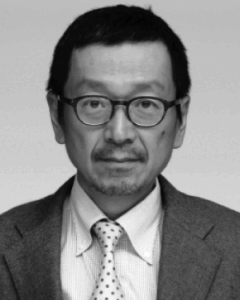 Kenji Itoh (Fellow, IEEE) received the B.S. degree in electrical engineering from Doshisha University, Kyoto, Japan, in 1983, and the Ph.D. degree in electrical engineering from Tohoku University, Miyagi, Japan, in 1997. He joined Mitsubishi Electric Corporation, in 1983, where engaged in the research and development of microwave and millimeter-wave transmitters, receivers, and semiconductor circuits for satellite communication systems, land mobile communication systems, and radar systems. Since 2009, he has been a Professor with the Department of Electronics, Kanazawa Institute of Technology, Ishikawa, Japan. He is a member of IEICE. He was a recipient of the 2002 OHM Technology Award by the Promotion Foundation for Electrical Science and Engineering of Japan and the IEEE MTT-S N. Walter Cox Award, in 2014. He was a member of Technical Program Review Committee (TPRC) of the IEEE International Microwave Symposium, from 2002 to 2017, an Associate Editor of IEEE Transactions on Microwave Theory and Techniques (MTT), from 2004 to 2007, and an elected member of IEEE MTT-S Administrative Committee (AdCom), from 2006 to 2008, in 2010, and from 2012 to 2014.(Based on document published on 13 May 2022).
Kenji Itoh (Fellow, IEEE) received the B.S. degree in electrical engineering from Doshisha University, Kyoto, Japan, in 1983, and the Ph.D. degree in electrical engineering from Tohoku University, Miyagi, Japan, in 1997. He joined Mitsubishi Electric Corporation, in 1983, where engaged in the research and development of microwave and millimeter-wave transmitters, receivers, and semiconductor circuits for satellite communication systems, land mobile communication systems, and radar systems. Since 2009, he has been a Professor with the Department of Electronics, Kanazawa Institute of Technology, Ishikawa, Japan. He is a member of IEICE. He was a recipient of the 2002 OHM Technology Award by the Promotion Foundation for Electrical Science and Engineering of Japan and the IEEE MTT-S N. Walter Cox Award, in 2014. He was a member of Technical Program Review Committee (TPRC) of the IEEE International Microwave Symposium, from 2002 to 2017, an Associate Editor of IEEE Transactions on Microwave Theory and Techniques (MTT), from 2004 to 2007, and an elected member of IEEE MTT-S Administrative Committee (AdCom), from 2006 to 2008, in 2010, and from 2012 to 2014.(Based on document published on 13 May 2022).
